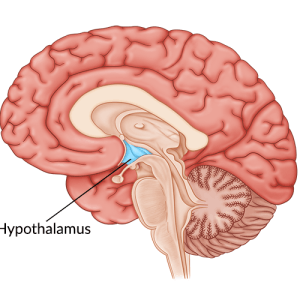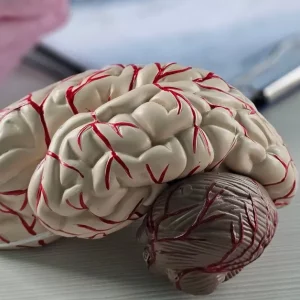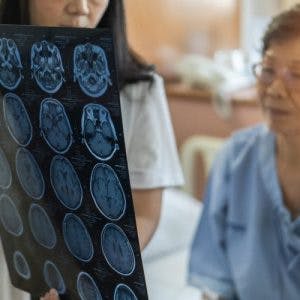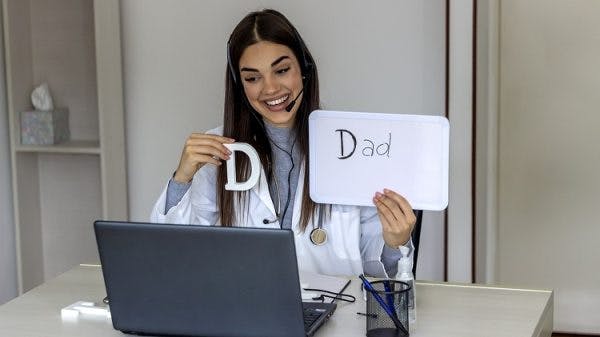Prefrontal cortex damage can result in many changes, including impairments in higher cognitive functions and differences in personality. Since survivors of prefrontal cortex damage typically do not experience any outwardly apparent physical effects, survivors may initially appear to lack brain injury symptoms. This makes the subtle cognitive changes that often occur following prefrontal cortex damage more challenging to identify.
This article describes the signs and symptoms of prefrontal cortex damage, and explains how to promote cognitive functions after a prefrontal cortex injury. Please feel free to use the links below to jump directly to any section of this article.
- What is the prefrontal cortex?
- Effects of prefrontal cortex damage
- Treatment and management techniques
What is the Prefrontal Cortex?
The prefrontal cortex is located at the forefront of the frontal lobe, directly behind the eyes and forehead. It comprises nearly 30 percent of the area of the cerebral cortex, making the prefrontal cortex of humans proportionately larger than that of any other animal.
Researchers typically divide the prefrontal cortex into multiple sub-regions, including the:
- Dorsolateral cortex
- Dorsomedial cortex
- Ventromedial cortex
- Orbitofrontal cortex
These areas control many diverse functions such as abstract reasoning, decision-making, and goal-oriented behaviors. These higher-level cognitive skills, often referred to as executive functions, help individuals control their impulses, interact appropriately, and act with long-term consequences in mind.
Executive functions are also used to adjust behaviors to fit specific circumstances. This requires skills such as initiation, attention, self-monitoring, self-correction, problem solving, and judgement.
In addition to controlling higher-level cognitive skills, the prefrontal cortex plays a role in personality expression and creativity. These abilities are often integral to what makes an individual unique. Unfortunately, an injury to the prefrontal lobe can affect each of these functions, resulting in changes to the survivor’s cognition and behavior.
Effects of Prefrontal Cortex Damage
Survivors with prefrontal cortex damage typically do not display the classic signs of a brain injury. For example, they may have no difficulties with movement, and all their senses are usually intact. Therefore, at first glance, they can appear to have made a full recovery from their injury.
However, family members and close friends might notice more concerning changes. Although they may seem to be able to perform most daily activities with little difficulty, survivors frequently have trouble completing tasks involving high level executive functions, a condition referred to as executive dysfunction.
Survivors may also demonstrate differences in how they responds to others, such as displaying blunted emotional responses or becoming more aggressive and irritable. The survivor’s behavior may also change, with some survivors struggling with motivation and initiating activities, while others may display problems with self-control and impulsivity.
Other common effects of prefrontal cortex damage include:
- decreased empathy
- short-term memory loss or amnesia
- poor decision-making skills
- personality changes
- difficulty with planning and organization
- inflexibility and stubbornness
- limited attention
- perseveration
Since these functions involve higher-level cognitive skills and responses, treatment can be a little more complex. However, with the right approach, it is possible for the survivor to restore their cognitive skills and personality traits.
Want 20 pages of brain injury recovery tips in PDF form? Click here to download our free ebook “15 Things Every TBI Survivor Must Know” (link opens a pop up for uninterrupted reading)
Treating Prefrontal Cortex Damage
Treating damage to the prefrontal cortex is difficult. Working with professionals who specialize in cognition and behavior, such as neuropsychologists, cognitive-behavioral therapists, occupational therapists, or speech-language pathologists, can greatly improve the survivor’s recovery outcomes.
These professionals can help survivors learn specific techniques to manage executive dysfunction and behave appropriately in different circumstances. Additionally, they can help survivors and their family members explore coping mechanisms and techniques to adjust to the many changes that occur following a brain injury.
Individuals with prefrontal cortex damage often thrive in a highly structured and organized environment. However, tasks that require creativity or self-initiative are harder for them to perform. Therefore, most therapists will try to help the survivor relearn how to adapt to new situations and create their own structure.
The following are a few ways to accomplish this:
1. Create a Routine
Survivors with prefrontal cortex damage often struggle to plan or initiate activities on their own. This can cause inactivity, which will eventually lead to cognitive and physical decline.
Developing a structured routine can help survivors overcome this. Following a consistent routine helps survivors know which activities to expect throughout their day, without having to plan and organize their schedule each day.
If possible, it is beneficial for the survivor’s routine to include activities similar to those in their routine before their brain injury. For example, if an individual regularly went to the gym every morning, it may be helpful to include some form of morning exercise in their new routine, even if they are currently unable to go to the gym independently.
Family members and occupational therapists can be excellent resources to help survivors create a routine. Balancing productive activities with leisure and self-care time through a daily or weekly schedule can be especially beneficial. Many also find it helpful to write these tasks down on a calendar or in a planner, and check them off when completed to provide a sense of accomplishment.
2. Try Cognitive-Behavioral Therapy
Cognitive-behavioral therapy (CBT) can help survivors address the emotional and behavioral effects of damage to the prefrontal cortex. Specifically, CBT helps individuals learn how to convert negative beliefs that might affect behavior to positive ones.
For example, an individual with prefrontal cortex damage may feel as though they cannot perform any task from start to finish. This may cause them to believe that there is no reason to even try starting something.
A cognitive-behavioral therapist can help the individual retrain their thought patterns through various strategies. This could include skill building to relearn how to focus on completing a task and successive approximation, which involves working on simple, accomplishable tasks and building to more difficult ones.
As individuals learn to replace their negative beliefs with positive ones, their emotions and behavioral responses often improve. As they continue to challenge negative beliefs, the brain continues to change and create new neural pathways through a process called neuroplasticity.
3. Use Strategies to Improve Attention and Task Performance
Survivors of prefrontal cortex damage often have difficulties with completing tasks due to difficulties with attention and organization. There are many strategies to address these areas, including:
- Practicing task sequencing: To promote improvements in planning, sequencing, and organization skills, survivors must practice activities involving these skills.One such activity is task sequencing. Start by asking a someone to write down each step needed to complete an activity on a separate sticky note. For example, for making a pot of coffee, they may include steps such as get out the coffee pot, fill the pot with water, pour water into the coffee maker, put the coffee pot in place, insert a coffee filter, measure and pour coffee grounds, and press the start button. Then, the survivor can work to put the steps together in the correct order. As sequencing skills improve, survivors can work on more complicated tasks, such as preparing a meal. As they continue to improve, survivors can practice independently writing down the steps of an activity in order. This exercise can teach individuals how to organize their thoughts and think through a situation clearly.
- Minimizing distractions: Since prefrontal cortex damage can also cause problems with attention, it can be important to minimize distractions as much as possible. This might look different for each person. For example, if loud noises distract the person, they might need to work in their own quiet room. If that is not possible, noise-canceling headphones might be a good alternative. Keeping background stimulus, such as music or television, to a minimum may also help.
- Practicing mindfulness: Making a conscious effort to stay present in the moment can be difficult, especially for someone with a prefrontal cortex injury. Practicing mindful awareness of one’s inner self (thoughts and feelings) and the surrounding environment can help survivors improve attention, emotional regulation, and mental flexibility. Survivors can start by practicing mindfulness for just a few minutes each day, and gradually increase the amount of time spent practicing as their focus and attention improve.
As survivors continue using these strategies, their attention and organizational skills may improve, helping them to complete more complex activities. Even if noticeable improvements are not seen immediately, there is always hope for recovery after traumatic brain injury. Consulting with an occupational therapist or speech language pathologist may help survivors learn other ways to improve their higher-level cognitive skills.
4. Cultivate a Supportive Environment
Because survivors of prefrontal cortex damage often have difficulties with initiating and pursuing recovery, it can be especially important for them to have a circle of support. Family members, close friends and medical professionals can play a vital role in helping to encourage, support, and motivate survivors throughout their recovery.
The following strategies can also help individuals cultivate a supportive environment:
- Join a brain injury support group. Both survivors and their family members can benefit from support groups to have a safe place where they can share their struggles and learn from others’ experiences.
- Know that recovery is not linear. It is essential for survivors and their families to acknowledge that both improvements and setbacks are normal parts of the recovery process. While it can be beneficial for the survivor to consistently challenge themselves, there may also be days when they need a break from rehabilitation or simply need a listening ear.
- Consider using a recovery journal. Keeping a recovery journal is an excellent way to see one’s progress over time. Consider marking especially good days to look back at for inspiration when the recovery process becomes frustrating.
Social and emotional support is vital for survivors to achieve their optimal recovery outcomes. Being present throughout both the good and bad times can help survivors as they adjust to life after brain injury.
5. Ask About Medications
Finally, individuals may find that using medications can help reduce the adverse effects of prefrontal cortex damage. One commonly prescribed drug for brain injury survivors is Ritalin.
Ritalin, also known as methylphenidate, increases the level of dopamine in the brain. This helps increase motivation and concentration, two skills that many brain injury survivors struggle with.
While medication should not replace other treatments, it can act as a helpful supplement. In fact, many survivors have found that drugs such as Ritalin help them regain the motivation they need to continue with their other therapies.
Therefore, if an individual’s symptoms do not improve with therapy, ask their doctor if Ritalin or other medications might be beneficial.
Understanding Prefrontal Cortex Damage
An injury to the prefrontal cortex can cause problems with complex cognitive skills, personality, and behavior. It can also change the way a person expresses their emotions.
While these functions are difficult to treat, with the right strategies it is still possible to recover many higher-level cognitive functions and live independently after brain injury. Creating a routine, pursing therapies, cultivating support, and using medications as necessary can all promote recovery in individuals with prefrontal cortex damage.
Recovery takes time and consistent practice. While these techniques may work for many survivors, each brain injury is unique, so they may not be effective for everyone. Talk with a doctor or neuropsychologist for more ideas on how to overcome prefrontal cortex damage.










